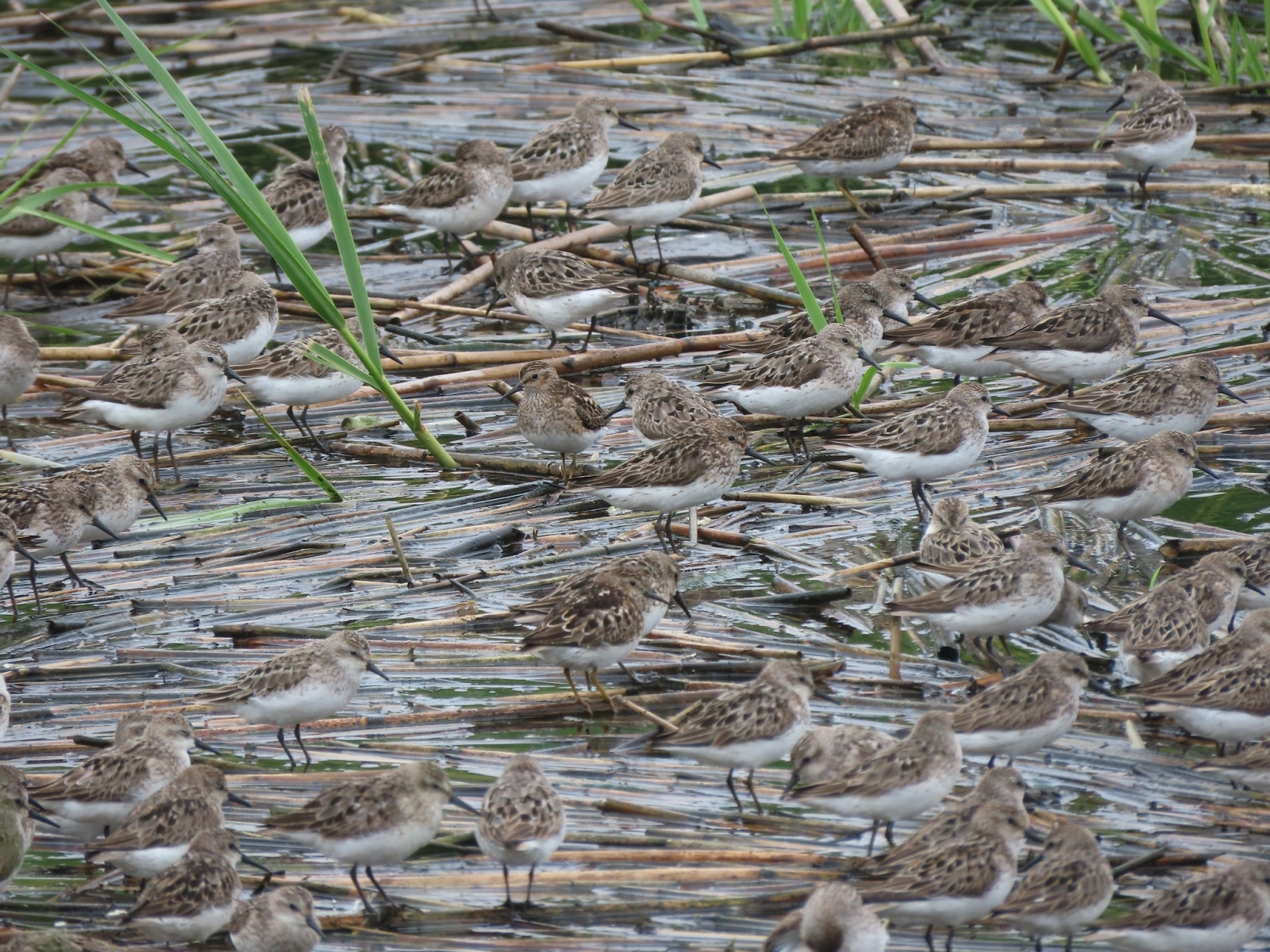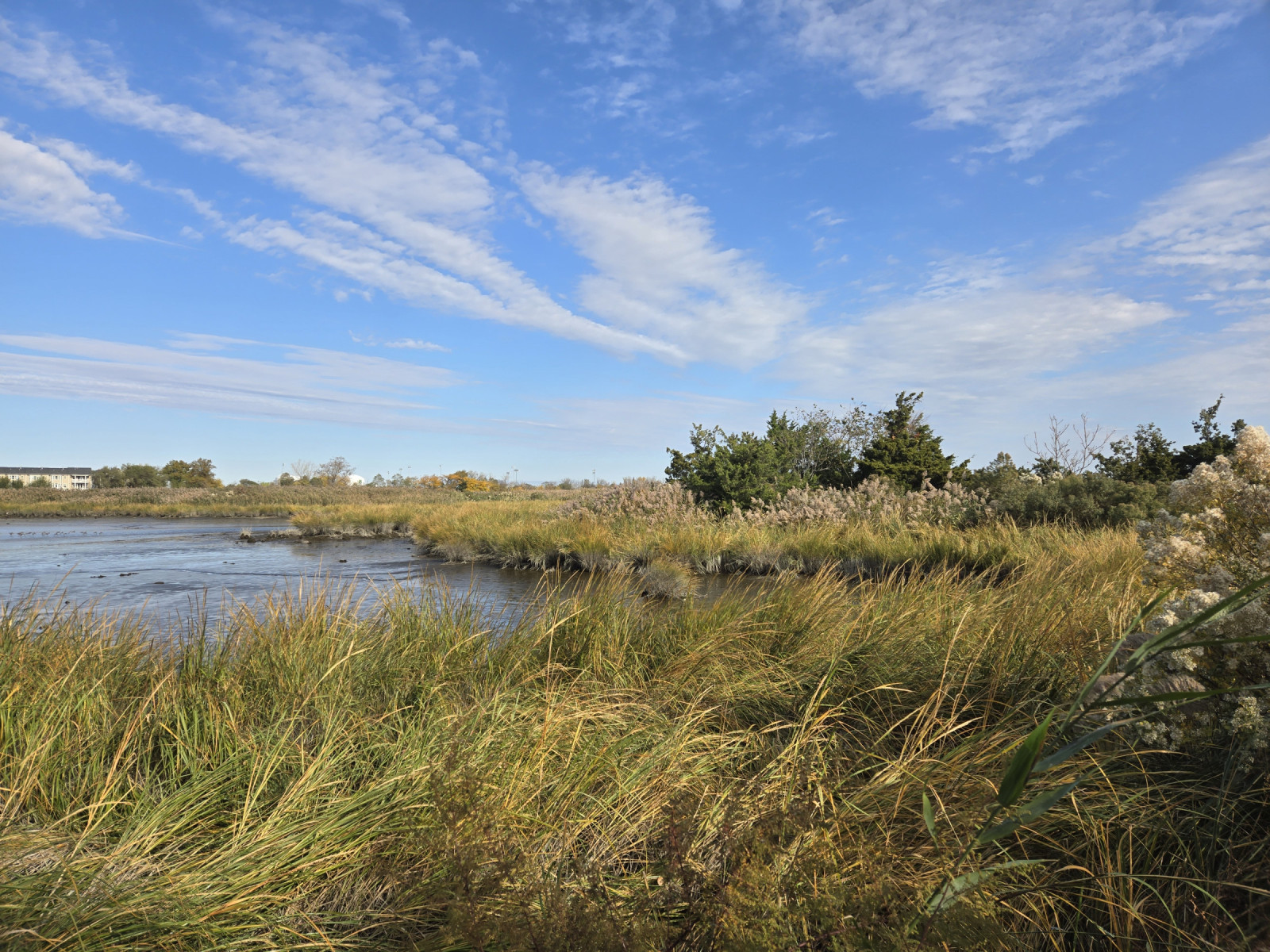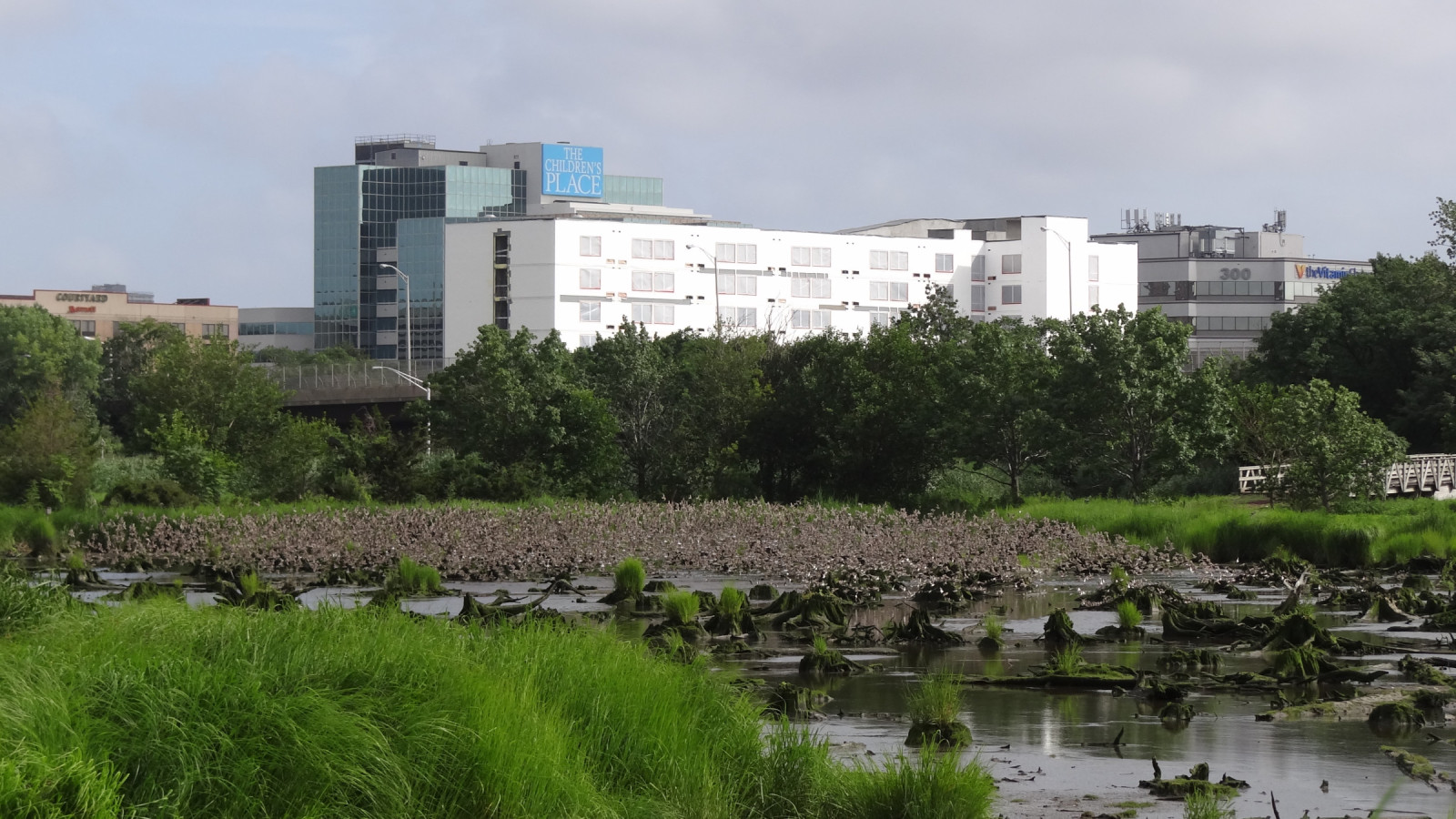Rate birdingplace Mill Creek Marsh
Rated 0 stars out of 5
0



Close to New York City and the New Jersey suburbs, Mill Creek Marsh offers winter waterfowl, spring and fall migrants, and spectacular summer shorebirding.
Mill Creek Marsh is 209-acre marshland. Saltmarsh and impoundments viewed from a broad, well-kept 2 km trail.
As long as there is open water, a good selection of winter waterfowl, especially American Green-winged Teal, is present. Raptors at this season include Cooper's Hawk and Red-tailed Hawk, Northern Harrier, and Peregrine Falcon. Rough-legged Hawk is occasionally seen over the marshes west of the Hackensack River, and there is a single record of a Snowy Owl. Passerine diversity is generally low in winter, with half a dozen New World sparrows (including Swamp Sparrow, Fox Sparrow, and White-crowned Sparrow) possible. Depending on cone crops to the north, wintering finches can include American Goldfinch, Pine Siskin, House Finch, and Purple Finch, which feed on the seed capsules of sweetgum trees. Yellow-bellied Sapsucker are reliable, especially in the tall cottonwoods at the southeast corner of the area.
Spring sees an increase in waterfowl numbers and diversity, with Northern Pintail, American Wigeon, Common Merganser, Hooded Merganser, and Ruddy Duck joining the mix. The first shorebirds, typically Greater Yellowlegs and Killdeer, arrive in March. April and early May see all of New Jersey’s common sandpipers and plovers, though the flocks are significantly smaller than they are at the beginning of the southbound migration in July. Almost every eastern wood warbler has been recorded here in May, though only a few species pause in large numbers.
Breeding birds at Mill Creek Marsh and in the surrounding wetlands include American Black Duck, Gadwall, Green-winged Teal, Ruddy Duck, Osprey, Bald Eagle, Eastern Kingbird, Warbling Vireo, Carolina Wren, Baltimore Oriole, and Common Yellowthroat. Willow Flycatcher, Tree Swallow, Marsh Wren, and Yellow Warbler are especially common and conspicuous.
Any of New Jersey’s heron and egret species can be seen at Mill Creek Marsh in summer, but only the Least Bittern breeds in the marsh; the others, including Yellow-crowned Night Heron, are commuters from nearby heronries or post-breeding wanderers. The most exciting avian phenomenon here is the fall shorebird migration, which begins in early to mid-July with the first southbound Greater Yellowlegs, Lesser Yellowlegs, Least Sandpiper and Semipalmated Sandpiper. A rising tide is essential for finding the largest numbers. The waters push the feeding birds to the western edge of the southern impoundment, where outstandingly close views and good photographs can be had. Of the twenty-two species recorded here thus far, Semipalmated Sandpipers are by far the most abundant of the migrants, with high counts of 6000 individuals or more crammed into this small area in the last days of July.
For so small and so notably urban a site, Mill Creek Marsh has accrued an impressive list of rarities over the years, among them Purple Gallinule, American Avocet, White Ibis, American White Pelican, Prairie Falcon (first New Jersey record), Brewer's Sparrow (first New Jersey record), Yellow-headed Blackbird, and Western Meadowlark.
To get to Mill Creek Marsh from New York City, take the New Jersey Transit bus 320 from the Port Authority bus terminal; the bus runs seven days a week, and the ride is between 25 and 30 minutes. Get off at Park Plaza and Harmon Meadow Boulevard and take the sidewalk over the Eastern Spur of the New Jersey Turnpike to the large parking lot. The well-marked entrance to the trail is at Bob’s Discount Furniture, directly ahead.
To drive from New York, take the Lincoln Tunnel to westbound Highway 3 Local; turn right on Mill Creek Drive, then left on Park Plaza and park at Bob’s Discount Furniture. Depending on traffic, the drive from Times Square is about 13 minutes.
From the west, take Highway 3 Local to the North Bergen exit, which comes immediately after passing beneath the NJ Turnpike; follow Harmon Meadow Boulevard as it curves to Park Plaza and turn left, parking at Bob’s Discount Furniture.
A broad, level footpath goes around the impoundments and offers views of the surrounding channels and saltmarsh. A short visit of 90 minutes can be enough to walk the entire trail, but on a good day in late July, October, or early May, it is easily possible to spend half a day here.
Mill Creek Marsh was saved from residential development in 1996, when approximately 100 hectares of marshland was acquired by the New Jersey Meadowlands Commission. Two impoundments, both communicating with the Hackensack River and thus both tidal, are encircled by a broad, level, well-maintained 1.5 km path that gives views of the impoundments, open channels, and surrounding saltmarsh. At low tide, the massive stumps of Atlantic white cedars, felled a century ago for lumber, are visible in the southern impoundment. The present vegetation is a mixture of native spartina cordgrasses, non-native phragmites reeds, and short trees, most of them introduced. Small patches of denser woods, at the southeastern corner of the area and along the two short spur trails on the west side, are particularly attractive to migrant songbirds.